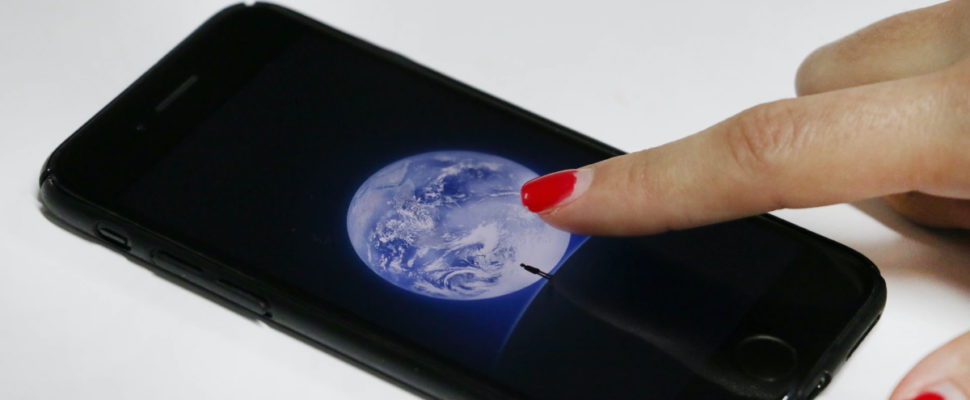I recently had the pleasure to moderate an event on the COVID-19 impact on the relationship between Doctor and Patient, attended by 50 executives of the French Healthcare community in China (Club Santé Chine). I would like to share here some learnings and personal thoughts.
One of the consequences of the COVID-19 crisis has been an acceleration toward the digitalisation of doctor’s meetings. In March, Tencent announced that the crisis has enabled them to multiply the number of registered patients by 1.6, with a total of 18 million customers in June… At first sight, it looks like a short term burst during the crisis, but in fact, it runs deeper. Currently, hospitals in China are back to normal operations, but patients still hide away from big hospitals. At the beginning of the epidemic, as in many countries, big Chinese hospitals were a factor in the dissemination of the virus. Patients switched massively to lower-tier hospitals and on-line consultations. Now they are reluctant to go back into the queues of big hospitals.
The focus of the talk was Tencent and its new services in healthcare (now called “Q Health” in English). It has become the biggest e-hospital integrated platform in China, with 450,000 doctors registered! It goes far beyond telemedicine. They have moved the whole hospital eco-system onto the internet, including selecting and booking the best doctors, meeting doctors (starting from the first consultation, not the second one), and the delivery of pharmaceutical and medtech products directly through the e-commerce arm of the platform… There are also improvements for the brick & mortar infrastructure. Diagnostics has, of course, to be done on-site: the platform enables the reduction of the minimum time of waiting and directs patients to the labs or clinic that is less used or nearest to their home. Tencent is one of almost 300 registered smart hospitals and clinics in the country.
Before the epidemic, China was already one of the global leaders in healthcare digitalisation. The entry of telemedicine has been relatively smoother in China than in the US or EU. Sometimes people say it is because Chinese doctors prefer to “play computer games”. Maybe. But I see a more important and simple rationale. In the West, the market is well established. In China, it is not. Most doctors see double the number of patients per day than their counterparts in the West. Consultations take on average a few minutes per patient (vs 10-20 minutes in the West). So digitalisation is not seen as a threat to their way of work, but as a way to reduce the burden of the numbers… In China, healthcare is undersupplied and a public service. It is frequent, even in big cities to see several doctors consulting together in the same room, without a private room for their patients. The latest data from the National Health Commission shows that 72 percent of beds are still supplied by state entities.
Beyond the deployment and the statistics, digitalisation is triggering profound changes in the mindsets of doctors. They start to see their patients as “their assets” and no more see their obligation to “serve the masses” as it is often the case. We are far from private medicine as seen in the West, but awareness is beginning. Entry into the digital era also enables the implementation of quality control in the consultation process. When they collaborate with internet platforms, doctors are paid a little bit more and are thus ready to walk the extra mile and be subject to reports by patients. They would refuse in the normal context of public hospitals in China.
On the business side, we see the same acceleration of digitalisation. Concretely, Wechat is now compulsory for any company working seriously in China [Wechat is a kind of integrated Whatsapp, Facebook & Paypal, but more powerful]. A few years ago, the headquarters of international companies were flagging Wechat as unnecessary and dangerous because it was outside of corporate policy. Now it is the reverse. It is the common denominator for the 500 most successful companies in China… But Wechat alone is not enough and also needs a customer relationship management (CRM) that can communicate with other channels. Life sciences companies are reducing the number of medical representatives and increasing multi-channel marketing. The sales process requires strong sales force effectiveness (SFE) mechanisms. Some companies are also adding a compliance module to their digital systems to put their sales teams under control… The key success factor then becomes the capacity to integrate these different modules in an operational system like the ones created by companies like Euris, a global solutions provider for healthcare data storage and management which is helping the healthcare industry to transform its approaches and processes in China.
The Chinese government has played a key role in embracing and accompanying the development of the phenomenon. The first key guideline on actively promoting e-health was adopted in 2015. Medical data entered into official vocabulary in the following year. In 2017, telemedicine and smart hospitals were officially defined. More needs to be done in terms of regulations, but the authorities let the companies develop new concepts and approaches and will regulate progressively at a later stage. This is why, from a Western point of view, we see some compliance issues. Will prescription be only the result of the doctor’s choice? Or will it be influenced by commercial practices? The local platforms explain that their fancy equipment is there only to “catch patients” and that “the Doctors are their best salespeople”… Proper regulations and time will be needed to improve the process and the interaction between the platforms, the doctors and the patients, but for the time being, we can see a significant improvement in the balance between supply and demand of healthcare services that benefits the Chinese middle class.
Made with Visme Infographic Maker



